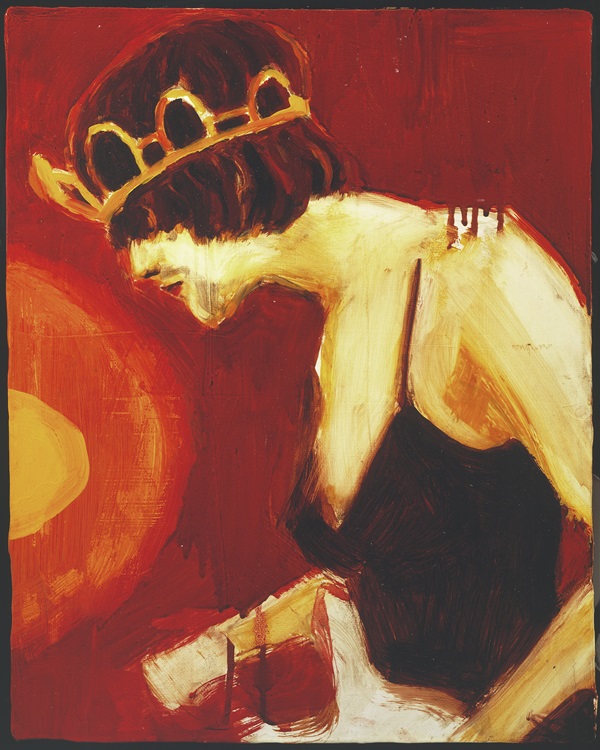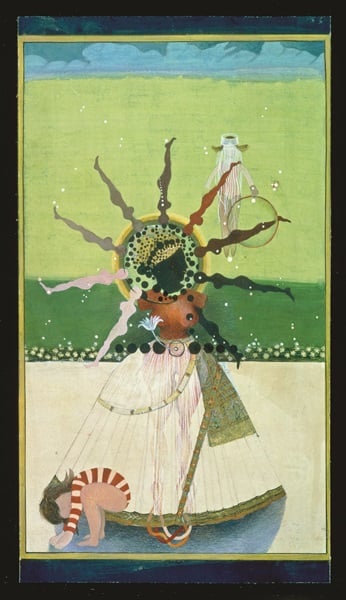Art & Exhibitions
Kurt Cobain Spurs New Grunge-Era Show
"Come As You Are" looks at artists who took that anthem to heart.

"Come As You Are" looks at artists who took that anthem to heart.

Eileen Kinsella

On Feburary 8, the Montclair Art Museum will open “Come As You Are: Art of the 1990s” the first major American museum survey that takes an in-depth look at the art being made during this pivotal period, while also providing plenty of historical context. “Come As You Are,” which, fittingly for the period it examines, takes its title from Nirvana’s grunge-era anthem, offers an overview of art made in the U.S. between the time of the fall of the Berlin Wall and the terrorist attacks of September 11, 2001.
The show brings together roughly 60 works by 45 artists including Doug Aitken, Janine Antoni, Matthew Barney, Glenn Ligon, Felix Gonzales-Torres, Kara Walker, and many more (click here for a complete listing of artists in the show.) Works on view will include installations, paintings, sculptures, drawings, prints, photographs, video, and digital art. Interestingly, many of the names that were first emerging on the scene then, are now among the leading lights of the contemporary art world nowadays (See: “Crowds Swarm Kara Walker’s Sugar Sphinx” and “Kara Walker’s Sugar Sphinx Spawns Offensive Instagrams“).
“Well it came partly out of my own personal experience and background as a student in the 1990s,” Montclair Art Museum founding contemporary curator Alexandra Schwartz told artnet News about the inspiration for the show, her choice of works for the exhibition, and what she hopes to accomplish with the show (stay tuned for our full-length video with Schwartz). “I feel as if the issues artists were dealing with in the 1990s are the ones that have really shaped how I think about art, how I think about my job as a curator and an art historian.”
The 1993 Whitney Biennial, for instance, “was so controversial and such a landmark show,” said Schwartz. “That really was a moment when very politicized art was embraced by mainstream institutions. So I was interested in thinking about that moment and looking back on it from then to now, how much has changed but how there are certain continuities…. The more I researched it, it really seemed to me that the 90s were a transitional period in many different ways.”

Shahzia Sikander Cholee Kay, Pechay Kiya Chunree Kay, Pechay Kiya (1997)
Citing the culture wars, intense discussions about race and gender, and what has come to be known as identity politics, Schwartz says “part of my thesis is that this is the last moment before globalization…where it makes sense to have a show only about artists who were working in the US. Yes there were many international artists but they were all working here.”
“It seems to me,” says Schwartz, that “the art world as we know it now, which is so globalized, really came into being during this time. It was a period when contemporary art as we know it now was invented.”
Asked about the Nirvana song from which the show takes its title, Schwartz told us, “It was really important to me in putting together this show to think about the art in the context of the broader culture, so that includes the political scene as well as what was happening in all different kinds of art, Pop culture, and popular music. Nothing could be more emblematic of the period than Nirvana and Kurt Cobain. But the title itself Come as You Are, is dealing so much with identity—who are you? how do you present yourself to the world? Come as the person you are…in all its complexity, and I think that’s what a lot of the artists in the show were dealing with.” (Another show this past year looked back at the 90s from an artistic standpoint, but through an international lens (see Garage Museum Canonizes the Nineties)).
Film buffs are also in for a treat. The show will present a series of films in partnership with the Montclair Film Festival that includes Basquiat (1996), Just Another Girl On The Train (1993), and one of our personal faves, Todd Haynes’s Safe (1995), starring Julianne Moore.
The show continues at MAM until May 17 and will then head on a national tour with stops at the Telfair Museum of Art in Savannah, Georgia, the University of Michigan Museum of Art, and the Blanton Museum of Art at the University of Texas at Austin.